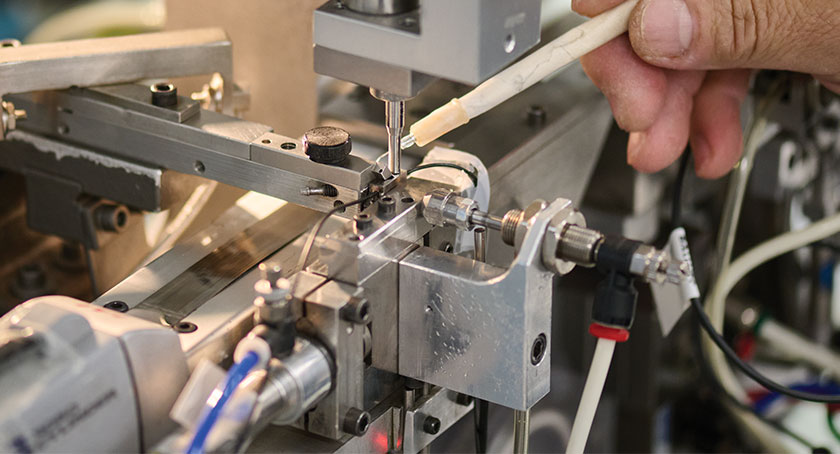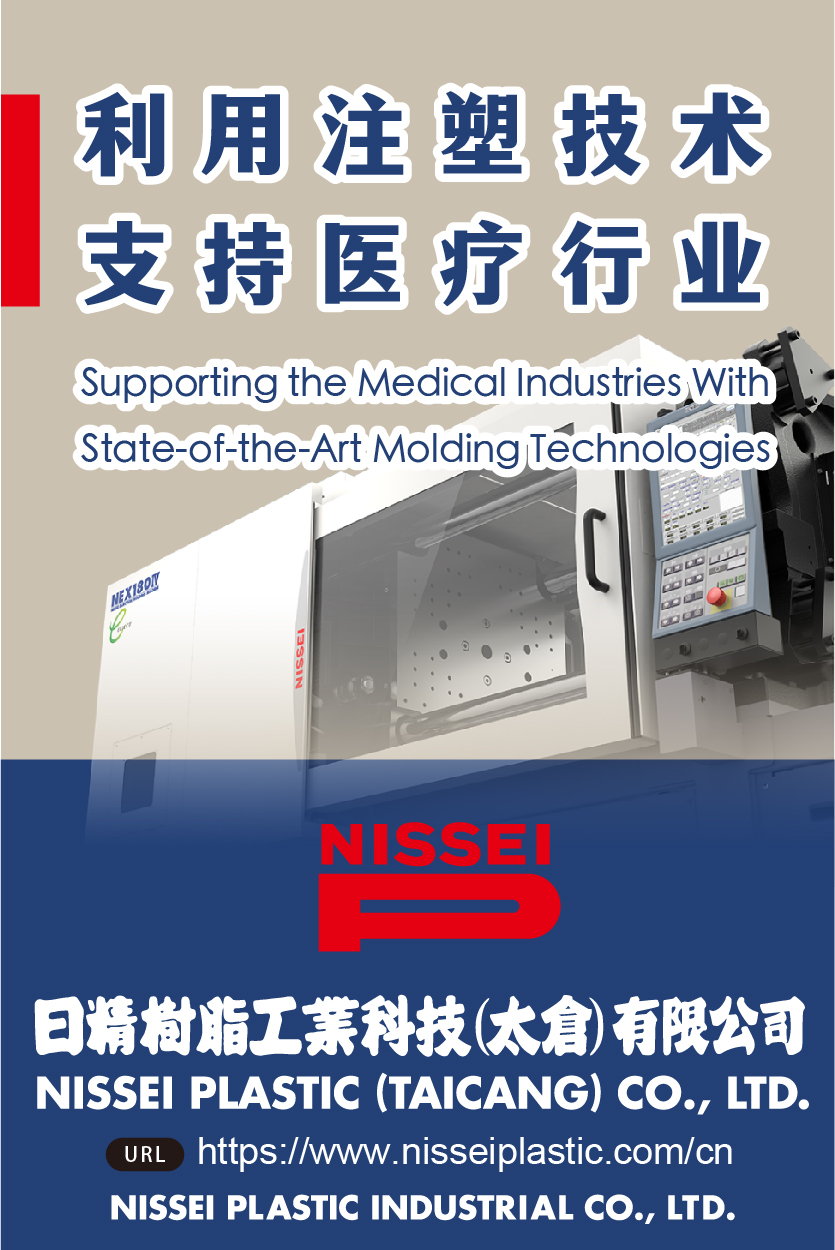Designing Medical Devices with Intelligence
Advanced tools such as AI, FEA, and additive manufacturing are all contributing to more sophisticated design practices and improved results.

The medical device industry is experiencing rapid advancements in product design and prototyping as a result of new or improved manufacturing technologies. For example, “additive manufacturing has evolved from a novelty to a robust and mature method, enabling designers and product developers to create complex prototypes quickly and efficiently,” said Jim MacDonald, business development manager for Vaupell, a Constantine, Mich.-based contract manufacturer that provides engineering, design, and manufacturing services to the medical device industry. “Significant improvements in software have further enhanced this process, providing product development teams with the required freedom to iterate products throughout the conception/ideation phase.”
The current state of product design and prototyping is heavily focused on speed and efficiency. Advances in materials science and rapid prototyping techniques such as micro-molding allow for faster, more affordable iterations of designs, saving time and money. “We are seeing increased benefits and use of micro-molding by medical device companies because it allows us to achieve tighter tolerances and quick production of small-scale prototypes,” said Brian Beringer, director of engineering for Hoffer Plastics, a custom injection molder in South Elgin, Ill.
In addition, prototypes are increasingly being used to “prove out” the manufacturability of a new product or to demonstrate how a first-generation innovation can be redesigned to be an improved next-generation device. For startup medical device manufacturers (MDM) in particular, these proof-of-concept prototypes are useful in keeping investors apprised of how risks are being managed as the device moves from design through production.
Many startups, even though they show strong capabilities in product design and prototyping, have difficulties in securing capital. This, in turn, determines how product development is structured. For example, “prototyping services have become more segmented and often operate on an ‘à la carte’ basis—meaning startups are forced to tackle development in smaller, more manageable and fundable chunks,” said Kevin Magrini, chief operating officer for Rev.1 Engineering, a Temecula, Calif.-based medical device design and development firm that provides expert engineering, design, and quality throughout the product development lifecycle. “Each phase of prototyping is typically tied to the next funding milestone, making progress highly dependent on external investment.”
This iterative process of funding stretches out timelines and adds complexity to maintaining design continuity and momentum. As a result, even highly capable teams experience frustrating delays and extended development cycles, simply because they do not have the capital to move through design and prototyping in a continuous flow.
In short, “although the tools and talent for innovative product design are in place, capital constraints and fragmented development paths are slowing down the pace of bringing new devices to market,” said Magrini.
Current Trends
Medical devices are getting smaller and smarter, which can make it harder to bring them to market and scale to meet customer demands. To increase the odds that a new design can be successfully executed within the designated project timeline and budget, more MDM designers are inviting their development and manufacturing partners to share their expertise during the design stage.
“Whether working for a large MDM or a startup company, designers face increasing pressure to successfully deliver on their innovations,” said Trent Birkholz, vice president, product development, for Intricon, a St. Paul, Minn.-based developer and manufacturer of smart medical devices powered by microelectronics. “With every expert involved in the design process contributing their knowledge, potential risks such as production delays, rework, and market failures can be identified early, allowing for necessary design adjustments.”
A hotspot for innovation is catheters and advanced endoscopic devices due to new therapies that treat chronic diseases, from cancer to cardiac arrythmias. “Energy therapeutics continues to be a very exciting space, driven by advancements in pulsed field ablation and intravascular lithotripsy,” said David Schechter, president and founder of Meddux, a full-service contract development and manufacturing organization (CDMO) specializing in single-use sterile therapeutic medical devices.
Catheters are just one class of devices that are defining a trend that aims to integrate as much functionality as possible into a smaller space while still maintaining an aesthetically pleasing design. Another example is wearable medical devices, which enable real-time or at-home healthcare monitoring, reflecting the industry’s shift toward more personalized, accessible, and continuous healthcare solutions.
“This effort to do more with less, however, does come at a cost,” added MacDonald. “It becomes a balancing act with keeping cost-effectiveness for later large-scale production.”
Designing smaller and smarter devices with enhanced functionality often requires the integration of electrical circuits, sensor technologies, and printed circuit board aspects into the mechanical component. “The design often requires us to do more with similar or smaller form factors,” said Birkholz.
MDMs are also becoming more particular regarding the specific chemical and mechanical properties of the engineered materials and resins they use, often pushing the limits of materials science. “In the catheter field, we have seen a number of new entrants producing innovative liners,” said Schechter. “Typically, these are ram-extruded polytetrafluoroethylene [PTFE] liners; however, we are seeing new manufacturing methods and new materials allowing for more flexible and integrated assembly methods. Design options including irradiation-compatible materials, film-cast, tie layers, and liners on core.”
What MDMs Want
MDMs want innovative designs that comply with stringent regulatory standards such as ISO 13485 and FDA requirements while also enabling quick access to the market. “Efficiency in design stages is therefore key to the eventual success,” said MacDonald. “Most recently, reduction in patient stay and operating room efficiency have become a recurring theme that MDMs seek to address early on in the design phase as key differentiators in the market after launch.”
Beringer agreed.
“MDMs increasingly seek a proactive approach to design for manufacturing [DFM],” he said. “Everyone is looking for ways to reduce costs. A good first step is simplifying the tooling, which has immediate and long-term impact over the life of the project. A more efficient tool design reduces up-front costs and also decreases the amount of future maintenance and downtime required. Then we look for ways to simplify the part design, which can further reduce overall production costs.”
MDMs ask their trusted development and manufacturing partners to weigh in on their design to ensure viability, functionality, and optimum performance. An important aspect of DFM is related to material selection. “Selecting the right material early on will ensure that the entire manufacturing process, including sterilization, ensures device functionality, cost efficiency, and patient safety,” said MacDonald.
“Within DFM discussions, MDMs are asking for more advice regarding off-the-shelf versus customizable designs,” said Birkholz. “This is important because designers may assume that custom is more expensive than off-the-shelf, not understanding where and how in the production process a customized process can save time and money.”
For example, a customer recently approached Intricon with a design that specified off-the-shelf components. Intricon’s engineers recommended a custom microcoils approach that made the design highly manufacturable, reduced the production schedule down to three weeks, and shaved 50% off the cost of production. “In this case, the original design also overcomplicated the placement of a component, which required unnecessary molding and assembly processes that would have driven up costs, diminished quality, and impaired performance of the device,” said Birkholz. “This project quickly evolved into a straightforward assembly approach and allowed the design to be executed under the roof of only one manufacturer.”
To reduce costs and speed up regulatory approval, MDMs are focusing more on de-risking at every stage of product development. “The days when a compelling concept or a successful preclinical prototype could trigger acquisition or significant partnership are largely gone,” said Andy Denison, chief technology officer for Rev.1 Engineering. “Today, MDMs expect startups to bring forward mature, validated solutions that have already cleared several critical hurdles—not just in design, but across regulatory, clinical, and commercial readiness.”
In terms of product design, this means MDMs are looking for:
- DFM early in the process, ensuring the product can scale efficiently without major redesigns
- Human factors and usability testing to be integrated early and often, especially for devices that interface directly with patients or clinicians
- Regulatory pathway clarity, including alignment with FDA guidance and ISO standards as well as clear documentation that supports submission-readiness
- Clinical validation plans that show not just feasibility but a clear path to safety, efficacy, and reimbursement
This shift has created a more capital-intensive and time-consuming pathway for startups. “MDMs want to see proof, not promise—which means that entrepreneurs must secure significant funding to advance their product far beyond early-stage feasibility before even being considered for acquisition or strategic partnership,” said Denison.
Ultimately, MDMs want strong partners that can facilitate taking a product from the early stages of product design and development all the way through to a cost-effective manufactured product at scale. “A complete partner can be hard to find,” said Schechter. “Some design firms are strong at early user-centered design, but often stop short of understanding what it takes to design a product ready for manufacturing. There are also great contract manufacturers that know how to manufacture at volume but have limited design capabilities. There are very few companies that are true CDMOs and can take a product seamlessly through development and into manufacturing.”
AM and AI
New advancements in injection mold prototyping can produce quick-turn production-grade molds via additive manufacturing (AM) of a mold insert. In the past, when executing a device design, a manufacturer only had two options—machine a hard tool for injection molding or a soft tool (typically aluminum), which was the more expensive option and more prone to breaking.
“Now, we can take a typical mold and 3D print a small part of the mold as an insert,” said Birkholz. “If that insert does not work, we simply 3D-print another one. We are taking 3D printing beyond printing the actual component and leveraging the technology at the tooling stage. This approach allows for more conceptual, quicker, less-expensive design exploration while retaining process quality. When the insert fits the specs perfectly, we have the tool we need.”
AM results in faster turnaround times on molded parts and reduces development cycle time. This speeds up the prototyping phase and allows for more rapid iterations, although the material properties of the final molded parts still often outperform additive prototypes.
“AM is evolving at an incredible pace, and the improvements in material quality and accuracy are game-changing,” said Beringer. “The ability to produce parts with greater precision, and even mix different materials in one print, is expanding the possibilities for designers. 3D printers that can integrate color and materials directly into the design open new avenues for product development, allowing teams to create prototypes that are much closer to the final product, both in appearance and functionality.”
Artificial intelligence (AI) also plays a disruptive role in product design. AI tools are being leveraged to optimize design processes, simulate real-world conditions, and predict potential issues in the design phase, which help reduce the need for costly iterations and increase speed to market. This technology allows for more efficient exploration of design alternatives and can significantly reduce the time spent on testing and validation. AI can also drastically improve the speed and efficiency of the design process by automating certain tasks and predicting outcomes more accurately.
“We are closely monitoring AI’s growing role in design,” said Birkholz. “While MDMs have not yet fully explored all that AI can offer, it will likely revolutionize areas like data organization and collection, to start. One immediate benefit is that AI enables CDMOs to provide faster project quotes.”
“The real question,” noted Beringer, “is how much input can AI have in these complex areas?”
For example, AI can assist with identifying optimal mold designs, suggesting improvements based on vast amounts of data, and even predicting potential issues before they arise. However, there is a large skills gap in the industry, particularly in tooling. Many aspects of tooling and mold design are learned through apprenticeships and hands-on experience, which AI cannot easily replicate.
“Even if AI tools become more advanced, experienced engineers will still be needed to guide the process, interpret AI suggestions, and apply their deep understanding of the industry,” added Beringer. “There will still be an essential need for engineers with critical design knowledge to evaluate the output.”
Advanced FEA
Finite element analysis (FEA) is a dynamic field that is evolving continuously and becoming a crucial tool in product design and development. It has transitioned from a specialized tool to a mainstream technology as a result of improvements in computational power and software. “While not always mandatory, and highly dependent on the actual product, FEA is often essential for ensuring product reliability and performance, especially when it comes to complying with stringent safety standards,” said MacDonald.
“When considering the use of FEA in the design process, a crucial factor is balancing simulation costs against the costs associated with physical prototyping,” said Denison. “For less complex devices with components that have short lead times, rapid prototyping and iteration might offer a more efficient and insightful approach. The hands-on experience gained from physical prototyping can also be invaluable for understanding design nuances.”
However, FEA proves its worth as a powerful risk-mitigation tool, especially for long-lead tests like fatigue analysis. “It allows us to predict potential issues and optimize designs before committing to costly physical testing,” said Denison. “Furthermore, FEA is instrumental in simulating device performance and evaluating various design parameters to achieve optimal results. It enables us to explore design spaces virtually, leading to better-informed decisions and improved product outcomes.”
Ultimately, the decision to use FEA depends on a careful evaluation of the specific project requirements, balancing the benefits of simulation with the practicalities of prototyping and testing.
Although it adds to the initial development cost, typically ranging from a few thousand dollars to more for complex analyses, FEA has the potential to enable overall cost savings by reducing the need for multiple prototypes and preventing costly design flaws. “It is also important to note,” said MacDonald, “that the accuracy of FEA becomes less reliable the more complex the product design gets.”
Challenges Remain
Product design comes with a variety of challenges, which are often influenced by the need to balance regulatory hurdles with performance, cost, sustainability, and manufacturability.
The main factors that hold back “full-on” innovation are not necessarily technological limitations, but rather human constraints—not having enough skilled labor, capacity, or imagination.
“Although there have been incredible advancements in tools and technologies, innovation can still be limited by the resources available, such as the capacity of teams to handle complex projects, or the bandwidth to truly explore groundbreaking ideas,” said Beringer. “Additionally, imagination and creative thinking play huge roles in driving innovation, and sometimes constraints in these areas—whether due to industry standards, market demands, or internal limitations—can slow down the pace of design breakthroughs.”
A key challenge is managing the balancing act between regulatory requirements, high costs associated with R&D, and speed to market (shorter development and validation timeframes). “Working through these challenges requires a strong partnership between MDMs and CDMOs to enable the launch of new devices efficiently and successfully,” said MacDonald.
A surprising number of MDMs choose not to take advantage of DFM, which raises the risk of costly problems occurring later in the production process. DFM partners can determine the best way to develop a design, including the availability of components in the supply chain, the viability of the production timeline and budget, and the efficiency of scaling production of the device to meet the expected market demand.
Lack of DFM is a major barrier to true innovation—an innovative, cutting-edge design means nothing if it cannot be efficiently produced or withstand real-world use. “MDMs and their design teams must involve development and manufacturing partners as early as possible to gain expert insights into how a design will perform in production and beyond,” said Birkholz. “Without this collaboration, even the most advanced ideas risk failure before they ever reach the market. Innovation isn’t just about big ideas—it’s about making them a reality.”
Major design factors such as tolerance, part functionality, and scalability are best discussed early in the DFM process. When working with materials such as molded plastic, there are inherent limitations that impact design and must be addressed. “For example, tight tolerances can be difficult to achieve, and it is crucial to have clear communication with customers to prevent issues as we begin full-scale production,” said Beringer. “Without early input and clarity of use, along with alignment on design expectations, projects risk delays or failed outcomes.”
The key to overcoming product design challenges is open dialogue, teamwork, and early alignment on desired outcomes. Collaboration, from initial design to DFM to understanding the important product functions, is critical for success. Working closely with the customer’s design team during the development process is the most effective way to ensure the final product is both manufacturable and scalable, and meets all regulatory and performance standards.
(Source:MPO)









